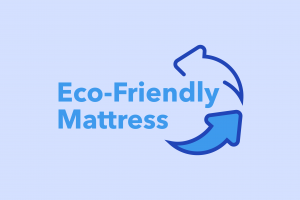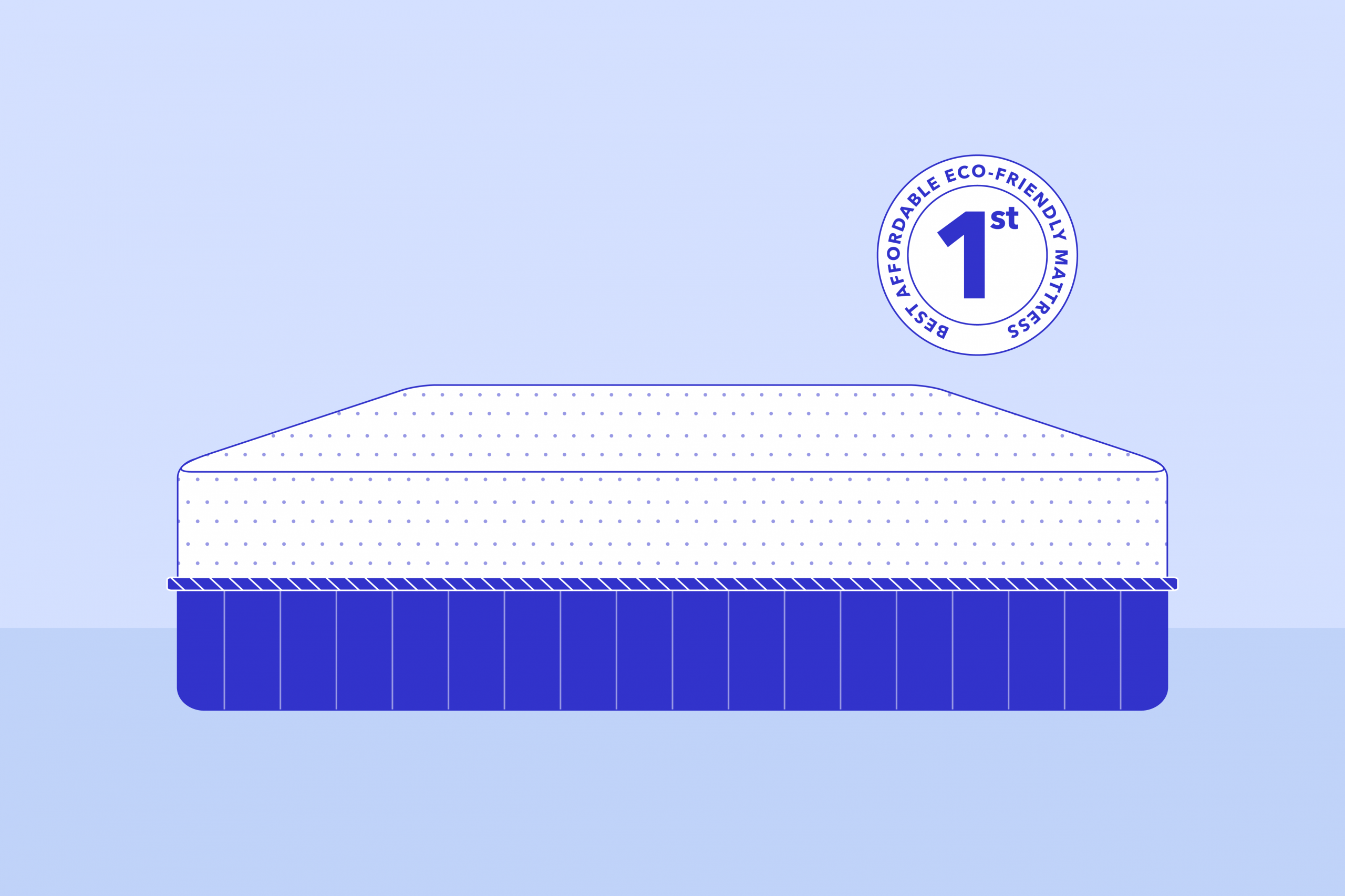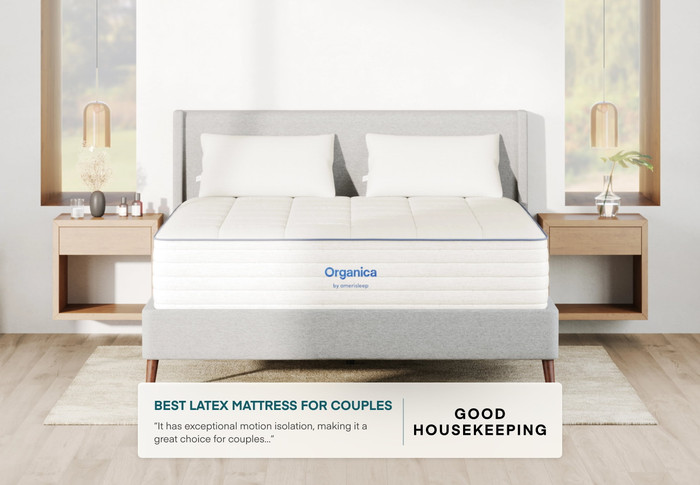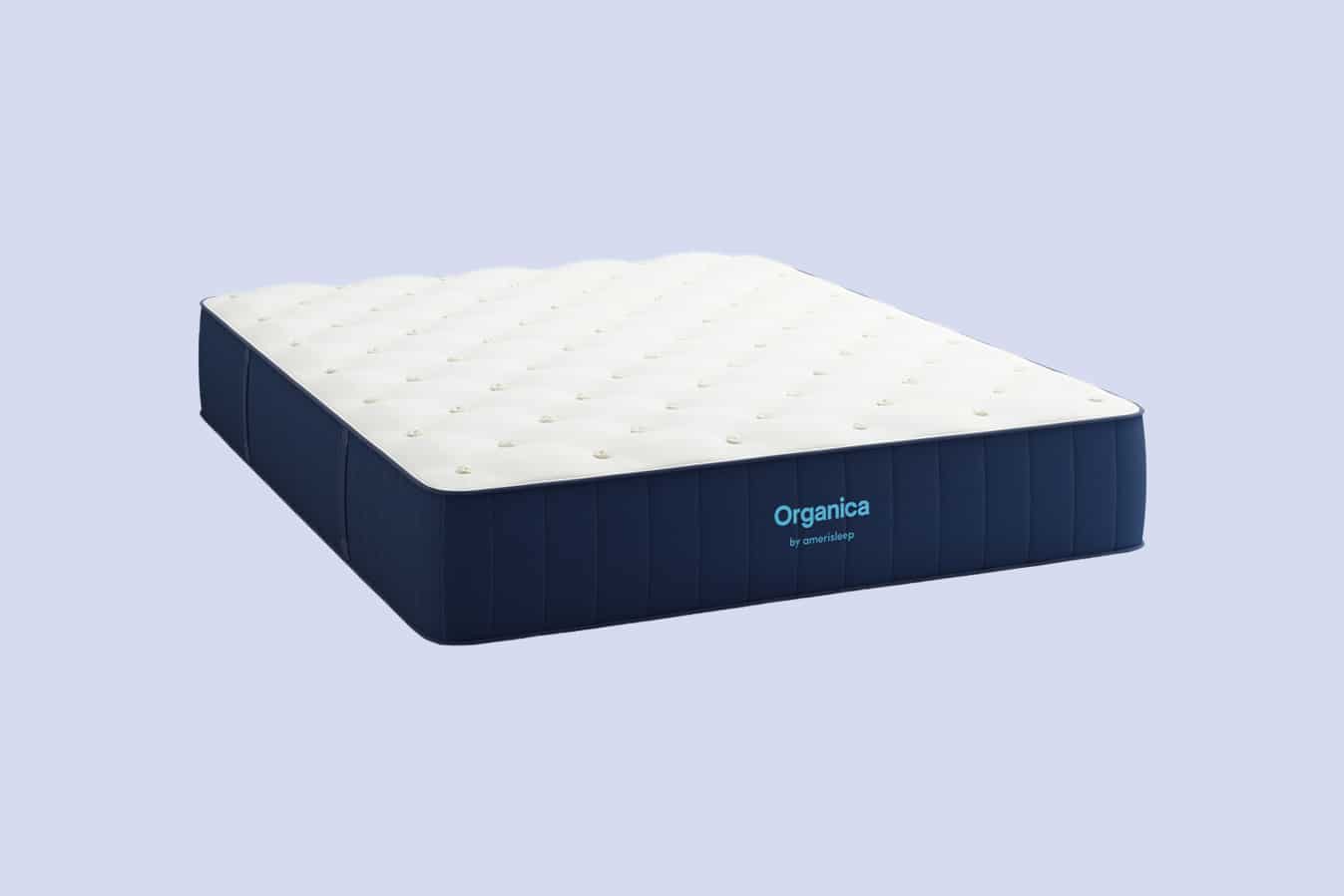Powered by Amerisleep, EarlyBird brings together a dedicated team of sleep science coaches, engineers, and product evaluators. We meticulously examine Amerisleep's family of products using our unique product methodology in Amerisleep's state-of-the-art laboratory. Our commitment to sustainability is reflected in our use of eco-friendly foam in our products. Each article we publish is accurate, supported by credible sources, and regularly updated to incorporate the latest scientific literature and expert insights. Trust our top mattress selections, for your personal sleep needs.
Key Takeaways
- Plan Your Mattress Shopping: Before diving into the purchasing process, it is essential to outline your requirements, including comfort preferences, size, and any specific eco-friendly features you seek. This step allows for a more focused search and helps in developing a feasible budget.
- Understand Eco-Friendly Options: Familiarize yourself with different types of eco-friendly materials, including natural latex, plant-based memory foam, and sustainable fabrics like wool and bamboo. Look for certifications like CertiPUR-US®, Global Organic Textile Standard, and GREENGUARD Gold to ensure the eco-friendliness of the product.
- Shop Smart for a Good Value: Online platforms often offer a wider selection of eco-friendly mattresses at competitive prices. Compare different brands and models, paying attention to specifications, materials used, certifications, and reviews. Keep an eye out for deals and promotions, and consider the shipping and disposal processes for both your new and old mattress to minimize environmental impact.
Thinking of an eco-friendly mattress but don’t want to pay an arm and a leg? Read these five tips for saving on a new healthy bed.
Eco-friendly products have a reputation for being pricier than their traditional counterparts, but it might surprise you to know that greener mattress choices don’t always mean spending more of your green.
Whether you want to live in a way that’s kinder to the environment or simply prefer natural or more healthy products in your home, eco-friendly mattresses can be found in most budgets if you know what to look for.
Read on to check out our step-by-step guide for finding a greener mattress that meets your needs.
Five Steps to an Affordable, Eco-Friendly Mattress
Mattress shopping itself can be a bit intimidating, and adding eco-friendly factors to the mix can make it seem even more confusing. How do you know what to look for, what to spend, or how to sort through the piles of products and claims?
We’ve put together a basic guide to planning, researching, comparing and getting a good deal on an eco-friendly mattress to make things a little easier.
Step 1: Make a Mattress Shopping Plan
 Any time your are looking to buy a new mattress or another major purchase, it’s always smart to begin by making a plan or checklist of what you want. This step helps focus your search, highlights things you might want to research and helps you develop a budget.
Any time your are looking to buy a new mattress or another major purchase, it’s always smart to begin by making a plan or checklist of what you want. This step helps focus your search, highlights things you might want to research and helps you develop a budget.
First, think about what you want in the mattress in terms of comfort and size.
Do you prefer softer, firmer or medium comfort levels? Do you like the contouring feeling of foams or a surface with less give? What size mattress will you need? Will you need to replace foundations or other bedding items? Do you have any other particular sleep needs or preferences?
Next, try to solidify what “eco-friendly” means to you and what you expect to see or avoid in your new mattress. Eco-friendly can have many different meanings, so this step can be helpful for researching products and working with retailers.
For example, are you worried about allergies or chemicals, or is it the manufacturing and business practices you’re more concerned about? Are there specific materials or ingredients you explicitly want to avoid? Are there things you’ve heard about that you want more information on?
Once you have the basics together, plan a realistic budget and start diving into researching different types and brands.
Step 2: Learn About Eco-Friendly Mattress Types & Options
 When a mattress is called eco-friendly, it generally means that the materials used, manufacturing methods, and/or shipping or packing methods represent a greener alternative to traditional products or methods.
When a mattress is called eco-friendly, it generally means that the materials used, manufacturing methods, and/or shipping or packing methods represent a greener alternative to traditional products or methods.
Looking at all these steps that precede the mattress ending up in your hands can give you a deeper understanding of how the bed is eco-friendly.
Mattress Materials
Eco-friendly mattress materials include those that come from natural, renewable sources or are more natural or sustainable than conventional alternatives.
All-natural latex comes from living latex trees. It can be produced quite sustainably and environmentally friendly, but it is also one of the most expensive mattress materials. Blended latex contains a mix of natural and synthetic (petroleum-based) latex, which is more affordable.
A memory foam mattress is known for a few pros (pressure relief, motion isolaiton, comfort, and support) and a few possible cons (heat trap, that sinking in feeling).
Plant-based memory foam incorporates renewable plant oils to reduce petroleum use compared to traditional memory foams. There are also plant-based poly foams that can be used in mattress cores and padding layers. Plant-based foams are much more affordable than latex and some are produced in environmentally conscious ways without harmful ingredients.
Some luxury beds also use recycled steel for springs and can have latex or plant foam comfort layers, with pricing ranging from mid-range to luxury. There are also eco-friendly futon-style mattresses stuffed with padding, latex or other materials, which can be affordable, but may not be suitable for long-term use.
Another mattress material that can escape notice is the flame barrier. Mattresses made in the USA must meet safety guidelines about resisting an open flame. Chemical flame retardants were once popular, but have fallen out of favor as the dangers surrounding have become more known.
Fiberglass is a popular material to keep a sleeper safe in case of a fire, though it’s not the most eco-friendly. It’s typically not solely glass and is made with a portion of plastic. Mattresses free of fiberglass may rely on wool or plant fibers instead.
You don’t even need to splurge on an all-latex mattress to enjoy the security of a fiberglass-free bed. Memory foam mattresses without fiberglass do exist.
Frames and foundations can also be made from eco-conscious and sustainable woods that don’t contribute destructive logging or deforestation practices.
For padding and fabrics, fibers like wool, cotton, and bamboo are readily grown and renewable sources that are considered more eco-friendly than petroleum or plastic-based synthetic fibers. Natural textiles often aren’t much more expensive that synthetics, but organic versions can be pricier.
Manufacturing
When it comes to manufacturing, eco-friendly would mean that there is very little pollution produced or that that manufacturer takes measures to minimize impact. Some foam is produced in sealed chambers that filter by-products so as not to contribute to atmospheric or water pollution, for example. Organic manufacturers have rigorous standards to meet also.
You don’t have to just take a brand’s word on their eco-friendly production process, as there are a number of the third-party certifications to keep an eye out for:
- CertiPUR-US® examines the polyurethane foam’s production to ensure it’s made without harmful materials.
- Global Organic Textile Standard oversees the production of organic fibers, including ecological and social criteria.
- GREENGUARD Gold examines chemical exposure and VOCs emissions.
- Global Organic Latex Standard provides a standard for organic latex foam, ensuring that all raw materials meet the necessary criteria to be dubbed organic.
- The Rainforest Alliance evaluates farmers to ensure they’re complying with three pillars of sustainability: social, economic, and environmental.
Assembly
Assembling also plays a role, as the best mattresses are put together using potent adhesives or fire retardants that can contribute significantly to off-gassing and air pollution. Eco-friendly options include certified low-VOC adhesives or beds with unglued layers and fiber flame barriers.
Shipping & Operations
The final category of typical eco-friendly mattress considerations is to focus on business practices. Mattresses are often quite bulky and large, meaning shipping can add significantly to their carbon footprint.
However, some brands like Amerisleep ship mattresses in compact packaging, which doesn’t require freight delivery, significantly reducing fuel consumption. Companies’ approaches to packaging materials, recycling, and other eco-friendly practices might also be important to some shoppers.
See our Shipping Information and FAQ page for more information.
Step 3: Determine What’s Important to You
 Once you’ve made your mattress checklist and learned a little about the eco-friendly options out there, it’s time to start shopping.
Once you’ve made your mattress checklist and learned a little about the eco-friendly options out there, it’s time to start shopping.
Sort your list into things your new mattress absolutely must have, things that would be nice to have, and things you definitely want to avoid. Then, start taking a look at how the different mattress types and brands compare to your comfort preferences and your eco-friendly goals.
Step 4: Shop Smart to Get a Good Value
 You may have difficulty finding eco-friendly mattress options at a major retailer or in department stores, especially at affordable prices as they are often considered “specialty” mattresses.
You may have difficulty finding eco-friendly mattress options at a major retailer or in department stores, especially at affordable prices as they are often considered “specialty” mattresses.
The Internet offers a wider selection of green options that you can easily shop and compare, and greater competition often means better deals. Compare different retailers and options to ensure you are getting a good value.
Research the beds you are interested in and ask the retailer questions about the eco-friendly factors that are important to you. They should be able to provide you with information on the basic composition of each layer, their fire barrier method, adhesives, and fabrics and be able to support claims or certifications.
Once you’ve found a few good matches, compare the specifications and materials and see if any stand out as better value. For foams, you’d want to compare densities and layer thickness; for latex, the percent of natural material and manufacturing type; for springs, the coil type and padding layers.
You might also look into warranties, return policies, and online reviews if you are having difficulty making a decision.
Step 5: Getting the Best Deal
 When you shop can also factor in to savings. Try signing up for newsletters and social updates to get notified when deals pop up, or talk to a salesperson to ask about promotions or coupon codes if you are ready to buy.
When you shop can also factor in to savings. Try signing up for newsletters and social updates to get notified when deals pop up, or talk to a salesperson to ask about promotions or coupon codes if you are ready to buy.
If you have time to spare when shopping, nearly all mattress retailers tend to run sales near holidays, so keep an eye out for deals.
The Best Eco-Friendly Mattresses from Amerisleep
Quick Guide: A 30-Second Summary
| Best Eco-Friendly Mattress | Amerisleep Organica |
| Best Eco-Friendly Memory Foam Mattress | Amerisleep AS3 |
| Best Soft Eco-Friendly Mattress | Amerisleep AS5 |
-
Price Range
$1049 to $2348
-
Mattress Type
Hybrid
-
Firmness
5 to 6 out of 10 (Medium)
-
Availability
All sizes
-
Warranty
20 Years
-
Thickness
13 Inches
The most eco-friendly at Amerisleep is the aptly named Amerisleep Organica. Its cushioning and supportive top consists of organic wool, cotton, and latex foam, all bolstered by underlying pocketed coils.
- Organic cotton and wool coverings
- Latex foam contours to the body
- Pocketed coils respond to movements
- Most sleeping positions
- Hot sleepers
- Sleepers with non-latex allergies
The Amerisleep Organica relies on certified organic materials to deliver a comfortable sleep experience. The mattress cover is GOTS-certified organic cotton fabric, a heat- and moisture-wicking material that delivers consistent comfort.
Underneath the cover is certified organic wool, a material that also pulls heat and sweat away for cooler sleep. The wool also serves as the bed’s natural flame barrier.
The primary comfort layer is 2 inches of soft Talalay latex, ready to conform to the body and keep pressure from building up in sensitive areas. The next layer of Talalay latex serves as the transition foam, offering a buoyant feel.
The support core of the Organica has pocketed coils on an inch of wool. By wrapping every coil, the Organica can offer improved motion isolation. So if you share the mattress with someone else, you can switch positions or slide out of bed without disturbing their rest.
The Amerisleep Organica, like all Amerisleep mattresses, ships free and comes with a 100-night sleep trial and a 20-year warranty.
-
$849 to $1798
-
Mattress Type
Memory Foam
-
Firmness
5 to 6 out of 10 (Medium)
-
Availability
All sizes
-
Warranty
20 Years
-
Thickness
12 Inches
The most popular mattress in our lineup is the Amerisleep AS3. It has a versatile medium feel that’s established by eco-friendly memory foam top and supportive polyfoam layers.
- Memory foam partly made with plant oils
- Five distinct support zones for the body
- Sturdy base strengthens the bed's value
- Most sleeping styles
- Couples with conflicting comfort ideals
- Hot sleepers
The Amerisleep AS3 stands 12 inches tall and has three foam layers wrapped inside an innovative mattress cover.
The first layer of the AS3 is our eco-friendly Bio-Pur® foam. This is plant-based foam is our ‘green’ update to traditional memory foam. Instead of relying solely upon the standard petrochemicals to make our foam, we replace a portion with castor oil for a more environmentally friendly, breathable, and responsive product.
Underneath the Bio-Pur® foam is the transition layer, Affinity foam with HIVE® technology. The HIVE® technology relies on hexagonal cutouts across the Affinity foam’s surface to create five zones of support.
The last foam layer is Bio-Core®, the material responsible for a sleeper’s support and the mattress’s high-value structure. Bio-Core® strengthens the bed’s overall construction to minimize sagging, providing a long-lasting mattress that you won’t need to replace any time soon.
All foam layers inside the Amerisleep AS3 are certified safe by CertiPUR-US®.
-
Price Range
$1449 to $2998
-
Mattress Type
Memory Foam
-
Firmness
3 out of 10 (Soft)
-
Availability
All sizes
-
Warranty
20 Years
-
Thickness
14 Inches
The softest mattress in the Amerisleep line is the AS5, carefully designed to hug the body without unpleasant sinkage. Sleepers can enjoy the cloud-like feel while also appreciating how easy it is to move across the surface.
- Eco-friendly memory foam top layer
- Responsive foams with specialized support
- Transformative mattress cover fabric
- Side sleepers of all shapes and sizes
- Lightweight sleepers
- Shoppers seeking a luxury mattress
Some sleepers want more plush cushion than what a medium mattress like the AS3 or Organica offers. The Amerisleep AS5 was designed to deliver a hug-like feel to a sleeper’s body and is particularly comfortable.
As with the Amerisleep AS3, the top layer of AS5 is Bio-Pur® foam. It’s conforming and pressure-relieving without being too thick. In fact, it’s the same thickness as the top layer of the AS3 and it feels softer due to the next layer.
The AS5 has an extra layer that the AS3 does not have underneath its layer of Bio-Pur® foam. This layer is known as Active Flex and is named for its responsive nature. Active Flex enables the surface to adapt more swiftly to movement without negating how soft the Bio-Pur® feels.
The transition layer of Affinity foam with HIVE® technology and the base layer of Bio-Core® deliver the same benefits as they do in the AS3.
Shoppers interested in a soft mattress with a bouncier feel can also try the Amerisleep AS5 Hybrid.
Other Eco-Friendly Bedding to Consider
While an eco-friendly mattress is a key part to a healthy sleeping space, it’s not the only part that makes up your bed. You’ll also want to look at sheets, blankets, pillows, and even the mattress protector.
Perhaps the most important aspect beside the mattress is a set of hypoallergenic sheets. Popular choices include bamboo sheets, cotton sheets, and Tencel sheets, the last of which are made with natural eucalyptus fibers. We have a few guides that compare and contrast these materials:
You can top up your bed’s comfort by curling up underneath a hypoallergenic duvet, comforter, or quilt. During the summer months, a simple cotton blanket should suffice.
After You Buy: Eco-Friendly Mattress Disposal
 After you’ve bought your new eco-friendly mattress, keep being friendly to the planet by not sending your old bed off to a landfill. Old mattresses take up tons of space and stick around for many years.
After you’ve bought your new eco-friendly mattress, keep being friendly to the planet by not sending your old bed off to a landfill. Old mattresses take up tons of space and stick around for many years.
Instead, see if you have local recycling facilities that accept mattresses, donate beds in good condition, or find another way to repurpose or reuse it.
Rest assured that an affordable, eco-friendly mattress is not an oxymoron. There are options, including Amerisleep, that offer both healthy sleep and greener beds without breaking the bank.
To find your perfect match, it really comes down to doing a little research into different materials, prioritizing what you want and smartly comparing options to find the best values for both your conscience and your budget.
Frequently Asked Questions
What is an eco-friendly mattress?
An eco-friendly mattress is made with the goal of minimizing harm to the environment. This means not only focusing on sustainably-produced materials but also the manufacturing process’s social impact. Many mattress brands that advertise their beds as eco-friendly strive to be as transparent as possible about the manufacturing process.
How do you pick a non-toxic mattress?
A mattress with materials certified by an independent organization is one of the best ways to ensure you’re choosing a non-toxic, eco-friendly mattress. Popular certifiers include:
- CertiPUR-US® for memory foam
- Global Organic Textile Standard (GOTS) for textiles
- Global Organic Latex Standard (GOLS) for latex foam
We also suggest shopping for a fiberglass-free mattress, as some sleepers are considered about the way fiberglass can irritate the body if it escapes the mattress.
Are foam mattresses environmentally friendly?
Many foam mattresses are not environmentally friendly as they are made wholly with synthetic petrochemicals. However, Amerisleep offers a more eco-friendly memory foam by replacing many of these synthetic ingredients with plant-derived oils. This creates a plant-based memory foam that is not only a more natural alternative but also improves the material’s breathability and responsiveness.
Is an eco-friendly mattress better for allergies?
When it comes to the best hypoallergenic mattresses for allergies, it depends on what materials a person is sensitive to. Anyone who is irritated by synthetic materials like polyester or polyfoam may find relief on a natural mattress. However, some sleepers are allergic to the natural materials that make up eco-friendly mattresses, such as cotton, wool, or latex. Such sleepers would be better off with a more traditional memory foam mattress.
Are organic mattresses eco-friendly?
Yes, an organic mattress is about as eco-friendly as a bed can be. To qualify as organic, a material must have little to no synthetic materials. However, the drawback of a fully organic mattress is that it can cost quite a significant amount, due to the production costs that go into making one.
What makes a mattress organic versus natural?
To call a mattress or some of the materials that make it up ‘organic,’ the material in question must be certified by a third-party organization. Popular certifiers include GOTS and GOLS, which scrutinize a material’s production process. The term ‘natural,’ however, is not regulated, which means there is no criteria that a mattress manufacturer must meet to call their beds natural.
What’s most important to you when shopping for a mattress or how do you shop? How do you research your buying decisions?
About the author
Rosie Osmun, a Certified Sleep Science Coach, brings a wealth of knowledge and expertise to the health and wellness industry. With a degree in Political Science and Government from Arizona State University College of Liberal Arts and Sciences, Rosie's academic achievements provide a solid foundation for her work in sleep and wellness. With over 13 years of experience in the beauty, health, sleep, and wellness industries, Rosie has developed a comprehensive understanding of the science of sleep and its influence on overall health and wellbeing. Her commitment to enhancing sleep quality is reflected in her practical, evidence-based advice and tips. As a regular contributor to the Amerisleep blog, Rosie specializes in reducing back pain while sleeping, optimizing dinners for better sleep, and improving productivity in the mornings. Her articles showcase her fascination with the science of sleep and her dedication to researching and writing about beds. Rosie's contributions to a variety of publications, including Forbes, Bustle, and Healthline, as well as her regular contributions to the Amerisleep blog, underscore her authority in her field. These platforms, recognizing her expertise, rely on her to provide accurate and pertinent information to their readers. Additionally, Rosie's work has been featured in reputable publications like Byrdie, Lifehacker, Men's Journal, EatingWell, and Medical Daily, further solidifying her expertise in the field.
View all posts







